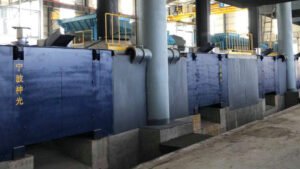
Nickel and cobalt are elements with similar physical and chemical properties. They are alloy elements with very low burning loss and easy to control. The control points are as follows.
Prevent the formation of low melting point sulfides
When smelting alloys with high nickel and cobalt contents, the sulfur content in the ingredients should be kept low while maintaining a high manganese to sulfur ratio (Mn:S ratio) to avoid the formation of low melting point sulfides in the steel. Thereby reducing the thermoplasticity of steel.
Control the hydrogen content in molten steel
When using electrolytic nickel, methods such as high-temperature annealing should be used to reduce the hydrogen content in the molten steel, reduce the amount of hydrogen brought in, and ensure the quality of the alloy.
Save resources and reduce costs
Both nickel and cobalt are important and scarce resources, so careful calculations are required when batching. On the premise of not affecting the process performance and usability, the middle and lower limit of the ingredient ratio should be used as much as possible to save resources and reduce costs.
Addition form and recovery rate
Nickel and cobalt are usually charged into the crucible in the form of pure metals. When the addition amount is small, it can also be added to the molten steel during the refining period. During the smelting process, the recovery rate of nickel and cobalt is usually between 98% and 100%, while in the smelting of returned materials, the recovery rate is about 94% to 98%.
For nickel and cobalt elements in medium frequency induction furnaces, the control points mainly include preventing the formation of low-melting point sulfides, controlling the hydrogen content in the molten steel, saving resources and reducing costs, and paying attention to the management of adding forms and recovery rates.
These control measures are critical to ensuring alloy quality and production efficiency and should be strictly implemented and monitored in actual production.







